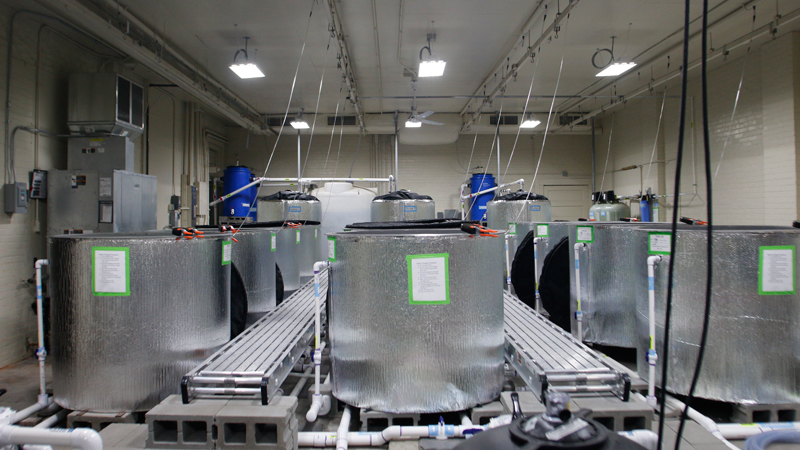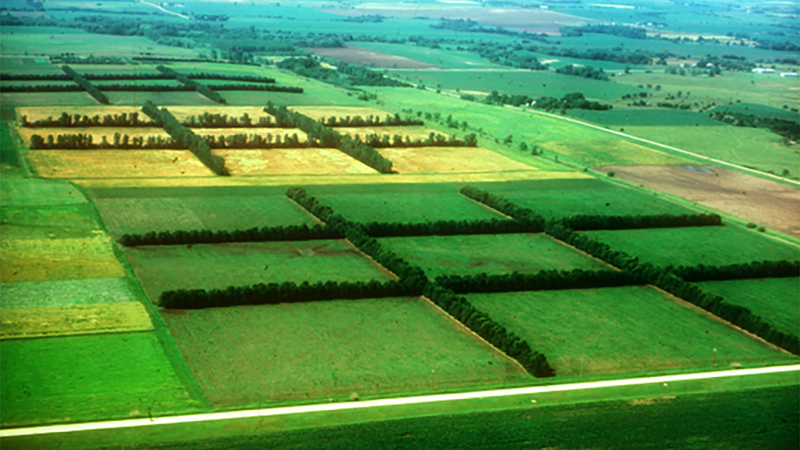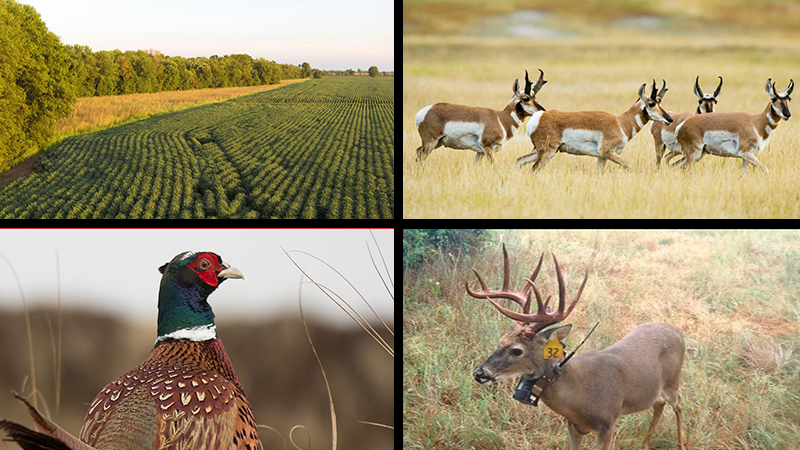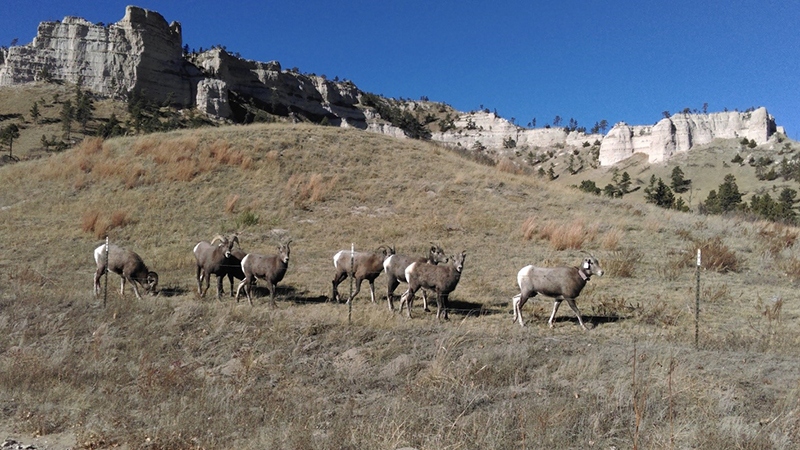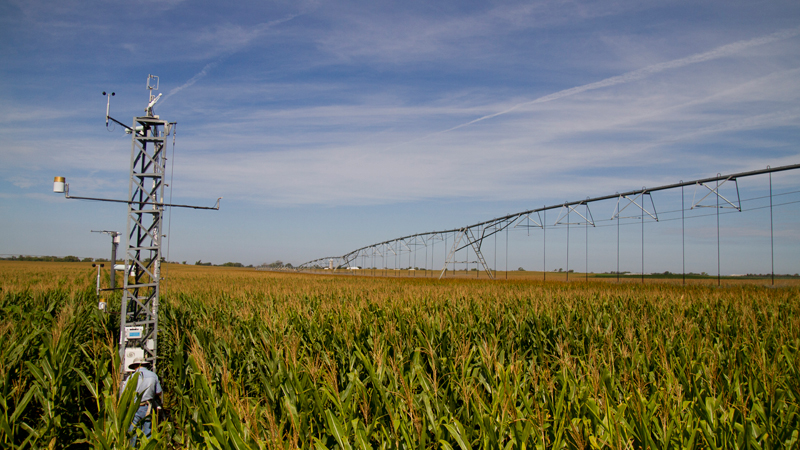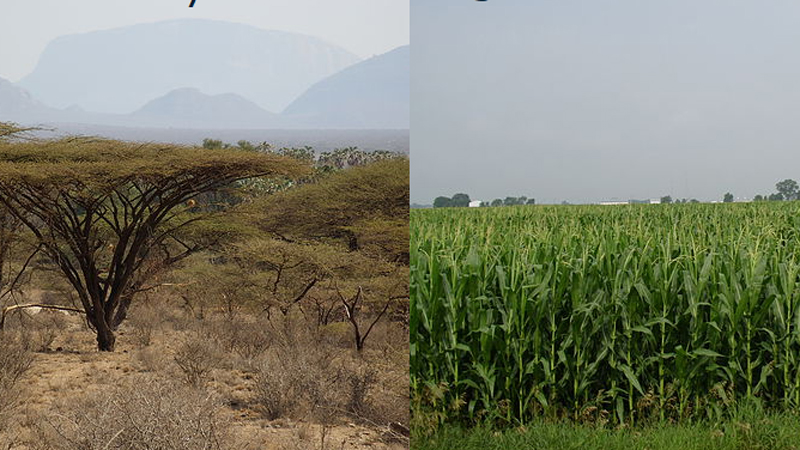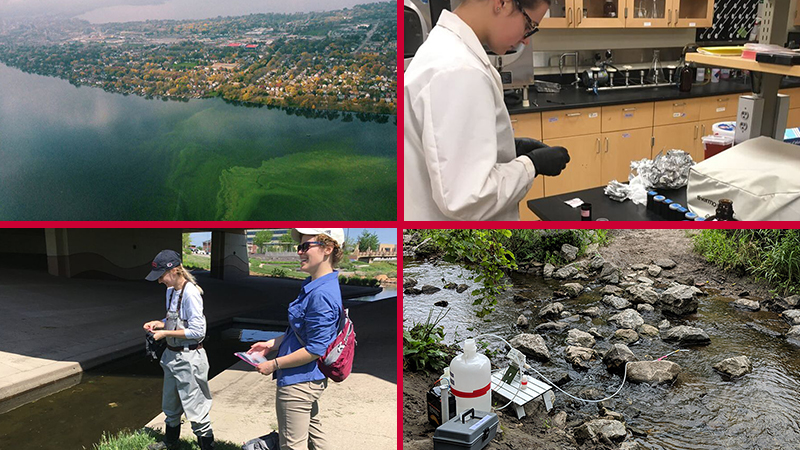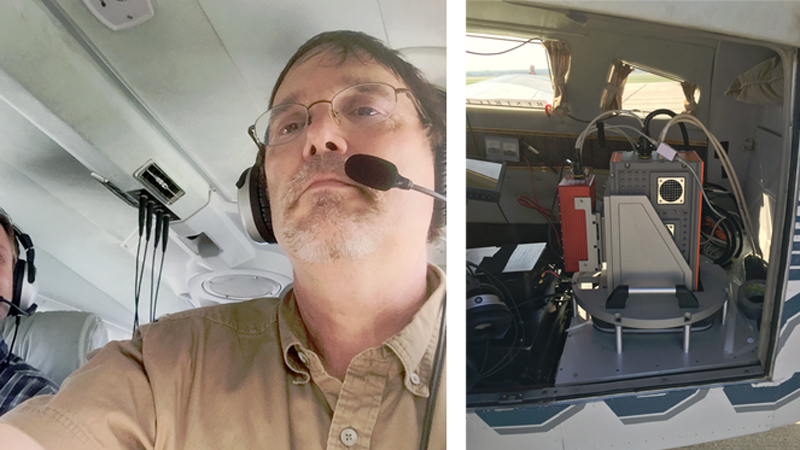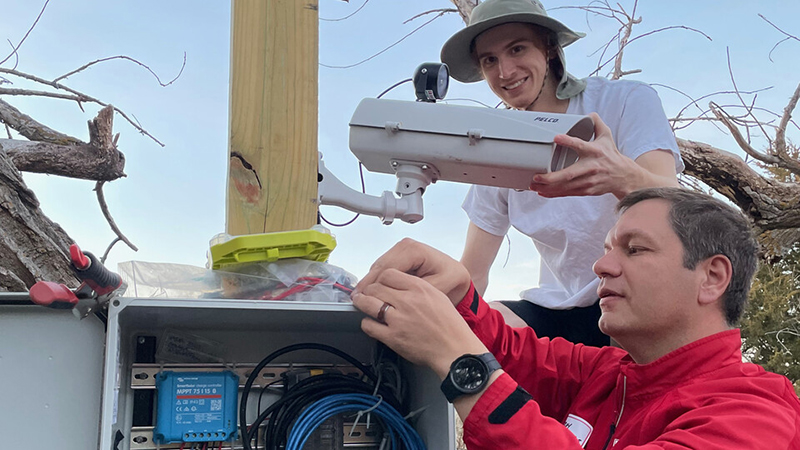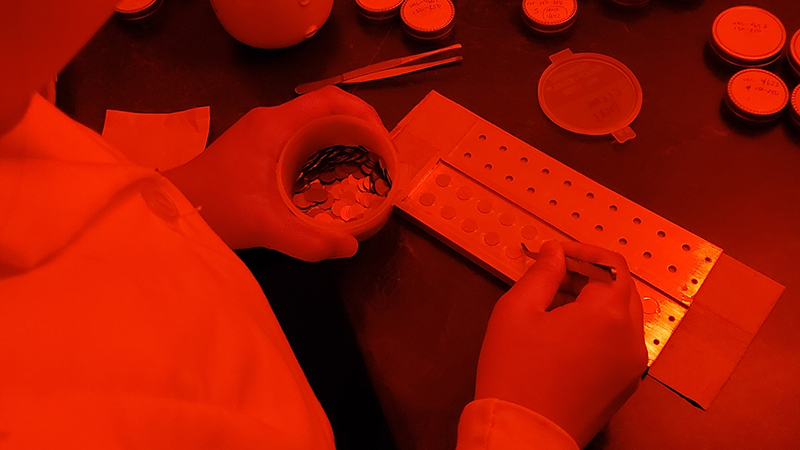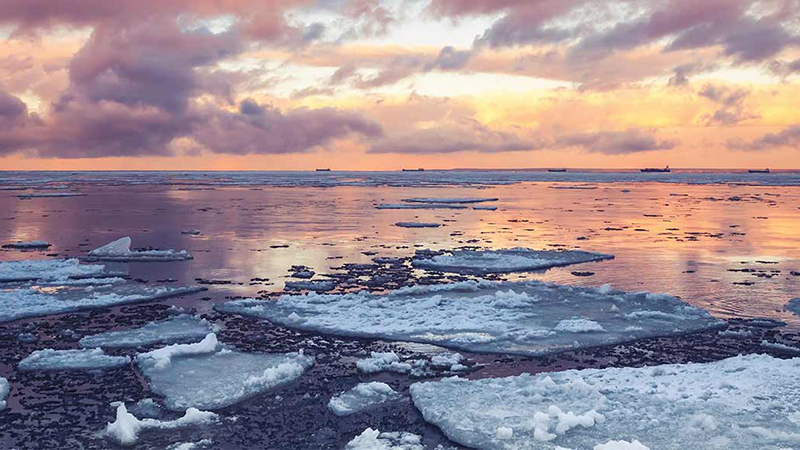Our faculty and staff know two heads are better than one. It’s why they build teams dedicated to tackling specific, scientific questions related to the natural resources in Nebraska, North American and beyond.
Aquatic Biodiversity and Conservation (ABC) Lab
Established in 2017, the Aquatic Biodiversity and Conservation (ABC) laboratory on University of Nebraska—Lincoln’s East Campus is designed to facilitate research on the physiology, ecology, behavior, and life history strategies of Nebraska fish species.
Agroforestry Research Farm
The ARDC Agroforestry Farm is a working 500-acre farm with the only replicated, long-term shelterbelt study in the United States. The farm is part of the University of Nebraska - Lincoln's Agricultural Research and Development Center (ARDC) located 30 miles northeast of Lincoln. The 9,500 acre ARDC, site of the Mead Ordinance Plant, was acquired from the US Department of Defense in the early 1960's.
Applied Wildlife Ecology & Spatial Movement Lab (AWESM)
Our lab focuses on developing innovative solutions to the growing wildlife conservation and management needs in multi-functional landscapes where there are competing interests for agricultural production, wildlife conservation, and ecosystem services.
Benson Lab of Predator-Prey Ecology
The Benson Lab studys wildlife population dynamics, behavior, and predator-prey interactions around the world. Current research investigates
- Wolf-coyote hybridization dynamics
- Ecology of mountain lions in a major metropolitan area
- Wolf-caribou predator prey dynamics
- Mule deer population ecology
- Bighorn sheep spatial ecology
- Ecology of mountain lions in California
Carbon Science and Modeling Program
Long-term greenhouse gases and carbon sequestration study AmeriFlux Network, Mead sites (US-Ne1, US-Ne2, and US-Ne3) has been in continuous operation since 2001 and currently lead by Dr. Andrew Suyker to determine how much carbon can be stored in dryland and irrigated cropping systems, and what soil, plant, and atmospheric factors regulate C sequestration. Recently, the sites joined the AmeriFlux Core Site Network and will be funded on a long-term basis.
Critical Zone Research Group
The Critical Zone Research Group at the University of Nebraska-Lincoln, led by Dr. Arindam Malakar, focuses on the interactions within the critical zone—the layer from the tops of trees to the groundwater table. This multidisciplinary team investigates how human-driven activities affect this zone's biogeochemical reactivity (including carbon, nitrogen, and trace elements dynamics), utilizing advanced technologies to analyze soil health, water quality, and ecosystem responses. By collaborating with local communities and stakeholders, they aim to bridge scientific research and real-world applications, promoting sustainable land use and resource management plans, and identify proactive ways to protect water quality.
Ecohydrology and Hydrogeophysics Science Lab
Our goal is to monitor and model the flow of water through natural and human dominated ecosystems in order to understand how ecosystems function and how to utilize water more efficiently for food production. Our research is highly interdisciplinary and works at the interfaces of ecology, hydrology, agronomy, and geophysics.
Ecosystem Stoichiometry Laboratory
We study the processes that control and are affected by the flow of carbon, nitrogen, phosphorus, and other elements in and across ecosystems. We mostly work in lakes and streams, but not always. Sometimes we work in heavily polluted regions, other times we work in nutrient-poor regions. Always, we strive for our research to inform both ecosystem theory and sustainable environmental management. Jessica Corman leads the lab.
The STOICH Project is a NSF EPSCoR grant that combines Ecological Stoichiometry (ES) theory with ‘big data’ harvesting and analysis tools to build the research capability and human resource capacity to investigate stoichiometric control of ecological phenomena occurring across scales that we currently cannot investigate. The STOICH Project is a collaboration of five institutes to create a database that includes information from streams, lakes and other inland water systems across the nation. Once built, the database will unlock major potential in ecological stoichiometry, a framework that may hold the key to understanding large-scale environmental patterns triggered by a mismatch between the elements available in the environment and those needed by organisms.
Gamon Lab
Exploring Ecosystem Function at Multiple Scales -Dr. John Gamon studies the "breathing of the planet" – the exchanges of carbon and water vapour between the biosphere and the atmosphere that affect ecosystem productivity and help regulate our atmosphere and climate. Of particular interest are the effects of disturbance (fires, succession, weather events and climate change) on these basic processes. Additional research questions involve the detection of plant physiology, ecosystem function, species composition, and biodiversity using non-contact sampling methods. Much of this work is done with optical monitoring (remote sensing and automated field methods), and entails the development of new monitoring methods and related informatics tools.
GaugeCam GRIME Lab
Our team has been involved in image-based hydrology for over a decade. New applications are focused on image analysis, data fusion, and machine learning applications. This work informs the new workflows and functionality we're adding to GRIME2 and GRIME-AI. Recent studies include:
- GaugeCam (GRIME2) lab and field performance studies
- Water quality study using GaugeCam monitoring
- Improving streamflow monitoring
Human Dimensions Laboratory
The Human Dimensions of Natural Resources Lab in the School of Natural Resources conducts research on the social aspects of natural resources management. We use a variety of approaches to study the interactions between social and ecological systems, with an emphasis on recreationally exploited systems and conservation. Our work combines stated and revealed behavior of hunters, anglers, and foragers, ecological and behavioral responses of exploited organisms, and computational approaches to human dimensions questions.
Lamp Lab
Learning from Anatomy, Morphology, and Phylogenetics.
The Lamp Lab uses integrative approaches to study the evolution of deep-sea fishes and better understand how invasive species and human impact the fishes of the Great Plains. Current research investigates the population dynamics of nurse sharks from Bimini the Bahamas, invasive bigheaded carp reproductive ecology in Nebraska, and the bioluminescence and biofluorescence of deep-sea fishes.
Landscape Evolution & Luminescence Geochronology Laboratory
Luminescence dating uses various methods to stimulate and measure luminescence. It allows researchers to date materials that cannot be dated using other techniques. The age range of luminescence dating methods extends from a few years to over one million years.
Our Lab uses Optical Dating techniques such as optically stimulated luminescence (OSL), and infrared stimulated luminescence (IRSL).
